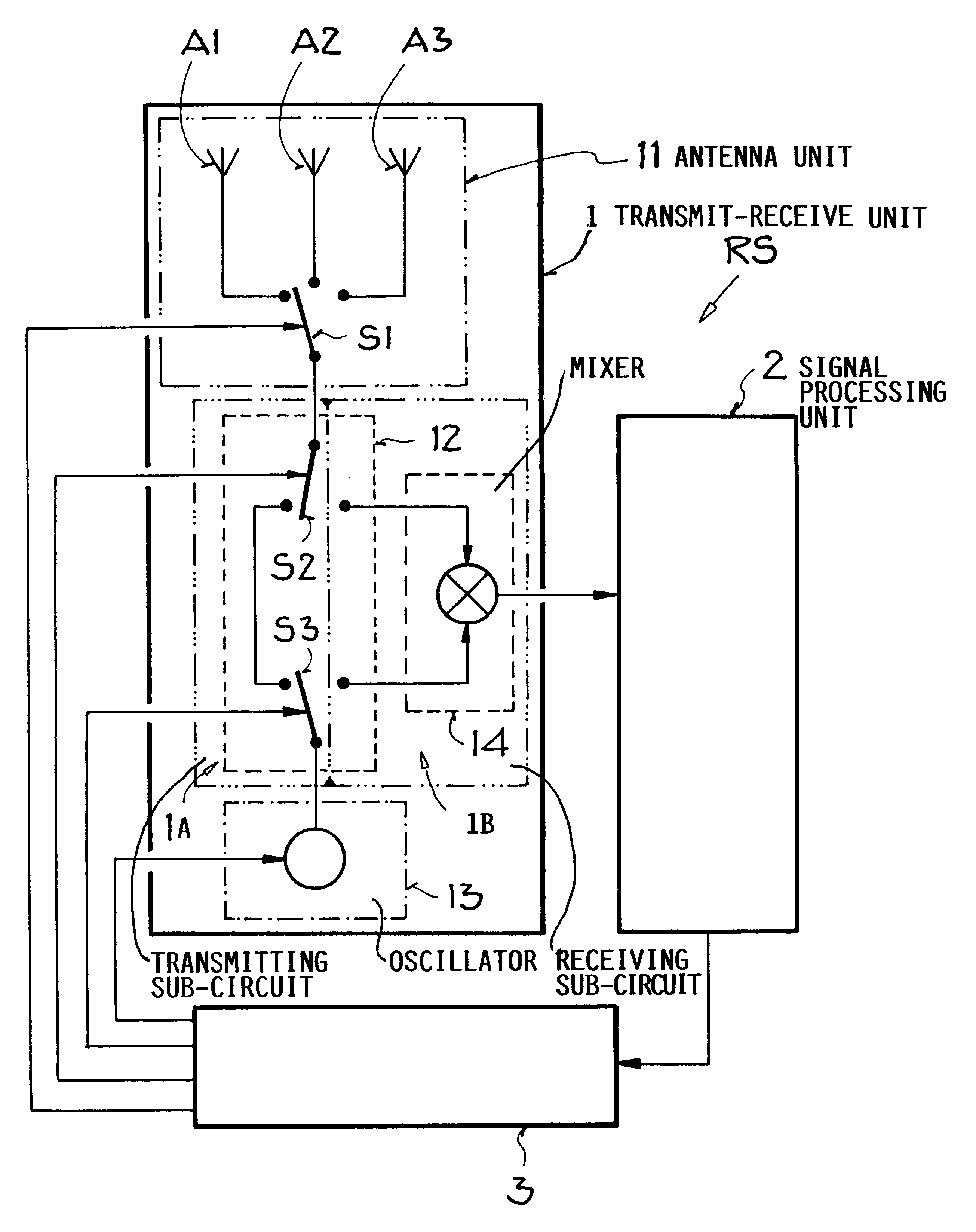Method of operating a multi-antenna pulsed radar system
- Summary
- Abstract
- Description
- Claims
- Application Information
AI Technical Summary
Benefits of technology
Problems solved by technology
Method used
Image
Examples
Embodiment Construction
Distance sensors used in separation distance warning systems for motor vehicles must be able to determine the distance or range and in some cases the relative velocity of reflection objects located in the pertinent observation field, with high resolution and without ambiguity. These reflection objects may particularly be preceding, following, or approaching vehicles, pedestrians, or any other radar reflection objects present in the pertinent traffic field or observation area around the subject motor vehicle. For example, the desired unambiguous distance measuring range or monomode operation range may be 150 m (which is relatively small in comparison to other radar systems), the desired distance resolution may be 1 m, and the desired velocity resolution may be 1 km / h. Moreover, it is a constant goal to achieve a good angular resolution, i.e. a good separation and discrimination ability between different adjacent reflection objects, for example between several vehicles driving ahead o...
PUM
 Login to View More
Login to View More Abstract
Description
Claims
Application Information
 Login to View More
Login to View More - R&D
- Intellectual Property
- Life Sciences
- Materials
- Tech Scout
- Unparalleled Data Quality
- Higher Quality Content
- 60% Fewer Hallucinations
Browse by: Latest US Patents, China's latest patents, Technical Efficacy Thesaurus, Application Domain, Technology Topic, Popular Technical Reports.
© 2025 PatSnap. All rights reserved.Legal|Privacy policy|Modern Slavery Act Transparency Statement|Sitemap|About US| Contact US: help@patsnap.com



